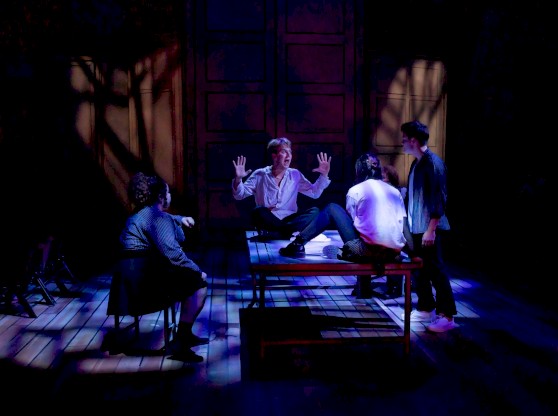Last March, five students traveled to Guatemala with their professor for an immersive art-making experience. During their ten-day trip, they did everything from crafting traditional alfombras from sawdust to having their work displayed in a museum in Antigua, Guatemala.
As part of UF in Guatemala: Sociocultural Influences in Arts Practice, a study-abroad program offered annually, the students focused on the intersection between art and cultural traditions in Guatemala.
The students visited two weeks before Semana Santa, or Holy Week, an important religious holiday in Guatemala that precedes Easter. They spent the last two days of the trip creating an alfombra, a traditional carpet made of flowers and sawdust. The group presented the alfombra as a cultural exchange offering to the community for the Procession of El Templo de Santa Ana, part of festivities leading up to Semana Santa.
The group spent hours sifting and hand-dyeing 16 bags of sawdust for the Alfombra. Their design included an image of the sun and moon, along with other culturally significant Mayan symbols. The group created a second alfombra that was installed in the Museo de las tradiciones de Semana Santa Sor Juana de Maldondo, a history museum in Antigua.
At Hospitalito Atitlán in Santiago, the students worked with a German artist, Angelika Bauer, who creates illustrations for the hospital. Because many people living in the region speak indigenous languages, a language barrier between patients and Spanish-speaking hospital staff can complicate communication. To remedy this, Bauer creates drawings for booklets to educate patients about health and wellness through visuals. Through Bauer’s work, the students saw firsthand how artists can impact health in communities.
At a weaving cooperative in San Juan La Laguna, the students observed a traditional weaving process that some consider a dying art.
“One of the issues is that traditional practices, for example, weaving, are not being passed down generationally anymore because we now have technology and it’s much easier to make money doing things outside of the traditional practices,” said Dr. Heidi Powell, a faculty leader of the trip.
Students documented the weaving process, which includes spinning cotton and creating red dye from insects.
“They were looking at how culture and arts come together within a space outside the United States,” Powell said.
In addition to the group’s art-making and cultural exchange activities, the three undergraduate Research Tutorial Abroad students developed individual research topics that fused art with another discipline: art and entomology, art and sustainability, and art and art history.
Powell stressed that the trip had benefits for the students beyond their artistic practices and research projects.
“It’s about being immersed in an experience outside their own,” Powell said. “Not only did the students gain historical and cultural knowledge, but they learned different ways of being.”
Powell gave a special thanks to Milady Casco, the programs manager at Casa Herrera.




